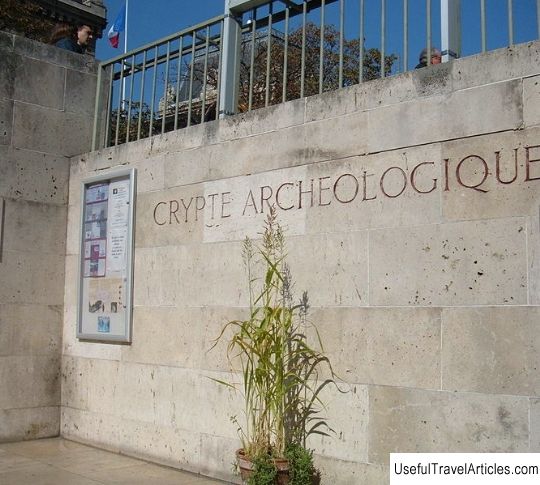Archaeological crypt of Notre Dame Cathedral (Crypte archeologique du parvis Notre-Dame) description and photos - France: Paris
Rating: 8,9/10 (2049 votes) 
Archaeological crypt of Notre Dame Cathedral (Crypte archeologique du parvis Notre-Dame) description and photos - France: Paris. Detailed information about the attraction. Description, photographs and a map showing the nearest significant objects. The title in English is Crypte archeologique du parvis Notre-Dame. Photo and descriptionThe crypt of Notre Dame de Paris Cathedral was opened to visitors in 1980. The creation of this underground museum was helped by a chance: in 1965, the construction of a parking lot began under the cathedral, and the builders stumbled upon some antiquities. Until 1972, excavations were carried out here, which gave amazing results. Archaeologists have discovered and preserved the ruins of buildings that have been built since ancient times. Thus, the crypt of the cathedral is now something like a time machine that allows you to travel through the thickness of the centuries. The term "crypt" in Western European architecture refers to the underground vaulted rooms located under the altar or choirs of the temple. As a rule, these premises were used for the burial of the relics of saints and martyrs. On the Ile de la Cite they are under the porch of the cathedral, and they are called "the crypt at the porch of Notre-Dame de Paris." Another name is also used - the Archaeological Crypt. The dungeon stretches under the cathedral for 120 meters. Here you can see the original remains of the Gallo-Roman streets of the era of the emperor Augustus - a contemporary of Christ. The ingenious underground heating system used by the Romans is well preserved. Lutetia, as the settlement was then called, acquired special significance in the third to fifth centuries AD: the city, which received the name of Parisia, became a Roman outpost on the way of the barbarians. Powerful fortifications have grown on the island - the masonry of the fortress wall that surrounded the city in the 3rd century can be seen in all details. On the map of modern Paris, you can find ancient baths, a forum, an amphitheater - the shadow of ancient Paris. Rapid construction was carried out on the Cite in the Middle Ages. Its center was, of course, the cathedral itself, the construction of which began in 1163 and was completed only in 1345. Medieval buildings have not survived to this day - in the 18th century, many of them were demolished to build roads. The picture was completed by the radical reconstruction of the city under Baron Haussmann, during which many old buildings were destroyed. Now in the crypt, you can see detailed models of the old, forever gone Paris - they help to understand how the development of the capital of France proceeded century after century.     We also recommend reading Church of Frol and Lavra in the village of Megrega description and photos - Russia - Karelia: Olonets district Topic: Archaeological crypt of Notre Dame Cathedral (Crypte archeologique du parvis Notre-Dame) description and photos - France: Paris. |




